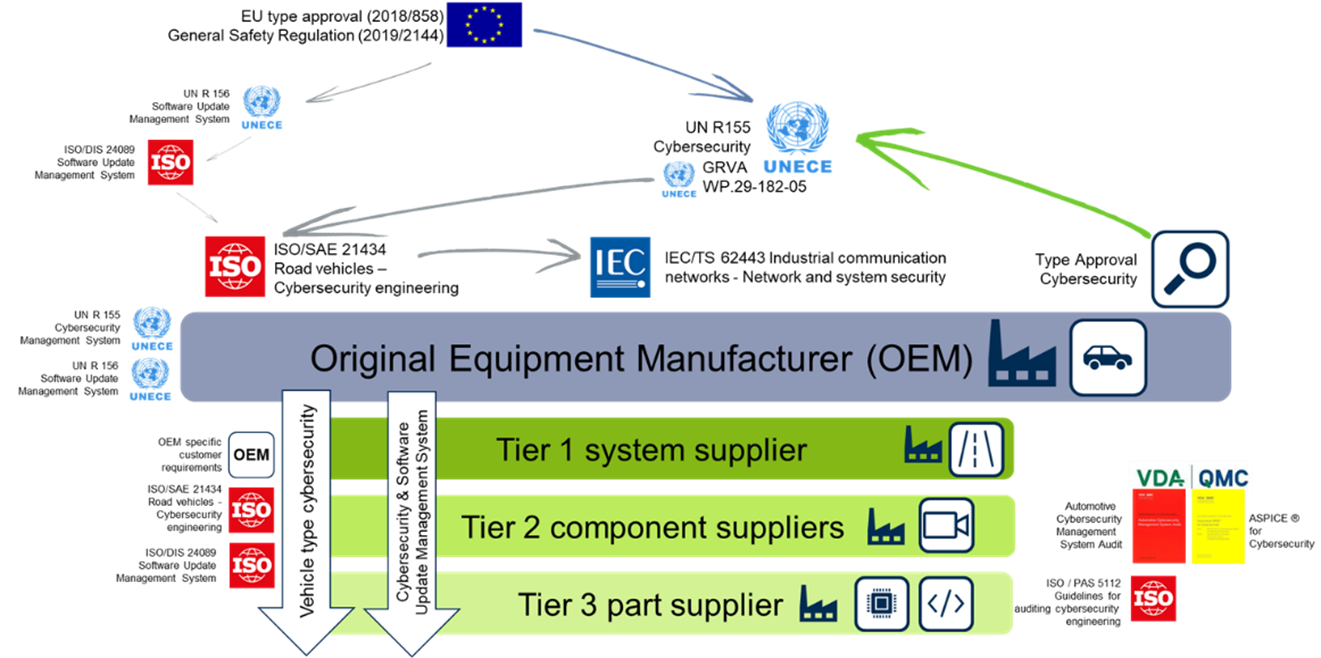Impostor syndrome is a psychological phenomenon where individuals doubt their abilities and fear being exposed as a fraud despite their success and accomplishments. This phenomenon can lead to negative consequences, including decreased productivity, increased stress and anxiety, and decreased job satisfaction. Impostor syndrome is a common experience among professionals, including project managers in the IT industry.
The objective of this essay is to explore the phenomenon of impostor syndrome in IT project management and offer a mixed approach of psychology and project management to overcome it. This approach will offer project managers tools to identify, acknowledge, and overcome impostor syndrome.
To begin, it is important to understand how impostor syndrome can impact project management. Impostor syndrome can lead project managers to doubt their abilities to lead, make decisions, and communicate effectively with their teams. As a result, this can lead to a lack of confidence, which can negatively impact the project’s success. Additionally, project managers experiencing impostor syndrome may be less likely to take risks and try new approaches, which can hinder innovation and growth.
The mixed approach of psychology and project management offers project managers a comprehensive way to address impostor syndrome. Effective communication, delegation, risk management, and decision-making skills are essential tools that can help project managers overcome impostor syndrome. Approaching these tools from both a psychological and project management perspective can provide project managers with a more complete understanding of how to overcome impostor syndrome and lead successful projects.
Throughout the essay, we will explore each of these approaches in-depth, discussing their importance, common challenges, and techniques for overcoming impostor syndrome. We will also provide real-world examples and case studies to illustrate how project managers have successfully used these techniques to overcome impostor syndrome and lead successful projects.
Impostor Syndrome in IT Project Management
Impostor syndrome is a common experience among professionals, including project managers in the IT industry. In this chapter, we will explore how impostor syndrome specifically affects IT project management, its prevalence, and common signs and symptoms of impostor syndrome in this field.
The impact of impostor syndrome on IT project management can be significant. Project managers experiencing impostor syndrome may doubt their ability to lead, make decisions, and communicate effectively with their teams. As a result, they may struggle to establish trust and credibility with team members, which can negatively impact team dynamics and overall project success. Impostor syndrome can also contribute to decreased productivity, increased stress and anxiety, and decreased job satisfaction among project managers.
One of the reasons why impostor syndrome is particularly prevalent in the IT industry is because of the rapidly changing nature of the field. Technology and processes are constantly evolving, and project managers are expected to stay up-to-date with the latest trends and tools. This can create a sense of pressure to constantly learn and adapt, which can contribute to feelings of inadequacy and self-doubt. Furthermore, IT project managers may feel like they are expected to have all the answers, which can contribute to feelings of being a fraud.
Impostor syndrome is a prevalent experience among project managers in the IT industry. In fact, a survey conducted by the Project Management Institute (PMI) found that 70% of project managers experience impostor syndrome at some point in their careers. This statistic highlights the importance of addressing impostor syndrome in the IT project management field.
There are several signs and symptoms of impostor syndrome in IT project management. Some common signs include feeling like a fraud, fearing being exposed as incompetent, and attributing success to luck or external factors. Project managers experiencing impostor syndrome may also struggle with perfectionism, self-doubt, and difficulty accepting praise or recognition for their work. Additionally, they may experience feelings of anxiety or stress related to their work and may feel overwhelmed by their responsibilities.
Recognizing and acknowledging impostor syndrome is the first step in addressing it. Project managers experiencing impostor syndrome can benefit from understanding its impact and prevalence in the IT project management field. This knowledge can help them recognize when they are experiencing impostor syndrome and take steps to address it.
One approach to overcoming impostor syndrome is to seek support and guidance from mentors and colleagues. Project managers can benefit from finding a mentor who can offer advice and guidance on how to navigate the challenges of the IT project management field. They can also seek out support from colleagues and peers, who may be experiencing similar challenges.
Another approach is to develop a growth mindset, which involves embracing challenges and viewing failures as opportunities for learning and growth. Project managers can benefit from adopting a growth mindset by setting realistic goals and celebrating progress, rather than focusing solely on outcomes. This approach can help project managers feel more confident in their abilities and better equipped to navigate the challenges of IT project management.
Effective Communication
Effective communication is a critical component of successful IT project management. Communication is essential for building trust, establishing expectations, and ensuring that team members are on the same page. We will explore the importance of effective communication in IT project management and how it can help project managers overcome impostor syndrome.
One of the ways that impostor syndrome can manifest in IT project management is through communication barriers. Project managers experiencing impostor syndrome may doubt their ability to communicate effectively with their teams, which can lead to misunderstandings, confusion, and conflict. Effective communication can help project managers overcome these barriers by establishing clear expectations, setting boundaries, and building trust with their teams.
Effective communication involves both verbal and nonverbal communication. Verbal communication includes speaking clearly, actively listening, and using appropriate tone and language. Nonverbal communication includes body language, facial expressions, and eye contact. Both verbal and nonverbal communication are important for building rapport and trust with team members.
Communication techniques can help project managers overcome communication barriers related to impostor syndrome. One effective technique is active listening, which involves paying attention to the speaker, asking questions, and paraphrasing to ensure that both parties understand each other. Another technique is constructive feedback, which involves providing feedback in a constructive and nonjudgmental way. Constructive feedback can help team members improve their performance without feeling criticized or undervalued. Assertiveness is also an essential communication technique that can help project managers communicate their expectations, set boundaries, and ensure that their needs are met.
Effective communication can also help project managers overcome impostor syndrome by providing them with the tools to establish credibility and build trust with their teams. Effective communication techniques can help project managers establish themselves as leaders, communicate their expectations clearly, and build trust with team members. This can help project managers feel more confident in their abilities and less susceptible to impostor syndrome.
Advertisement
[widget id=”custom_html-68″]
Delegation
Delegation is an important component of successful IT project management. Delegation involves assigning tasks to team members, setting expectations, and monitoring progress. Delegation can help project managers overcome impostor syndrome by promoting collaboration, relinquishing control, and providing support.
One of the ways that impostor syndrome can manifest in IT project management is through a lack of confidence in delegating tasks. Project managers experiencing impostor syndrome may doubt their ability to delegate effectively, leading to micromanagement, a lack of trust in team members, and decreased productivity. Effective delegation can help project managers overcome these barriers by promoting collaboration, distributing workload, and building trust with team members.
Effective delegation involves several key strategies. The first strategy is assigning tasks to team members based on their strengths and abilities. By assigning tasks that align with team members’ strengths, project managers can help team members feel valued and engaged in their work. The second strategy is setting clear expectations for the task, including deadlines, milestones, and desired outcomes. Clear expectations can help team members understand their responsibilities and reduce the likelihood of misunderstandings. The third strategy is monitoring progress, providing feedback, and offering support when needed. By monitoring progress and providing feedback, project managers can help team members stay on track and achieve their goals.
Overcoming delegation-related impostor syndrome requires project managers to relinquish control and promote collaboration. Project managers can benefit from delegating tasks to team members, empowering them to take ownership of their work and contribute to the project’s success. Delegation can also help project managers build trust with team members, demonstrating that they value their input and are willing to rely on their expertise.
Effective delegation can also help project managers overcome impostor syndrome by reducing their workload and enabling them to focus on higher-level tasks. By delegating tasks to team members, project managers can free up time to focus on project strategy, stakeholder management, and other critical tasks.
Risk Management
Risk management is an essential component of successful IT project management. Risk management involves identifying potential risks, assessing their impact, and developing strategies to mitigate or avoid them. Risk management can help project managers overcome impostor syndrome by promoting preparedness, increasing confidence, and reducing uncertainty.
One of the ways that impostor syndrome can manifest in IT project management is through a fear of the unknown. Project managers experiencing impostor syndrome may doubt their ability to handle unexpected challenges, leading to increased stress and anxiety. Effective risk management can help project managers overcome these barriers by promoting preparedness and reducing uncertainty.
Effective risk management involves several key strategies. The first strategy is identifying potential risks, including technical, financial, and schedule risks. By identifying potential risks, project managers can prepare for potential challenges and develop strategies to mitigate or avoid them. The second strategy is assessing the impact of each risk, including the likelihood and potential consequences. Assessing risk impact can help project managers prioritize their response and allocate resources effectively. The third strategy is developing risk response strategies, including risk mitigation, risk avoidance, risk transfer, and risk acceptance. Developing effective response strategies can help project managers reduce the likelihood and impact of risks.
Overcoming risk-related impostor syndrome requires project managers to increase their confidence in handling unexpected challenges. Effective risk management can help project managers increase their confidence by promoting preparedness and reducing uncertainty. By identifying potential risks and developing effective response strategies, project managers can feel more prepared to handle unexpected challenges.
Effective risk management can also help project managers overcome impostor syndrome by promoting collaboration and communication. By involving team members in risk identification and response planning, project managers can demonstrate their willingness to rely on their team’s expertise and build trust with team members. Additionally, effective risk communication can help project managers establish clear expectations and reduce uncertainty among team members.
Decision-Making Skills
Effective decision-making is a critical component of successful IT project management. Project managers must make decisions related to project scope, budget, timeline, and resource allocation. Effective decision-making can help project managers overcome impostor syndrome by promoting confidence, clarity, and accountability.
One of the ways that impostor syndrome can manifest in IT project management is through indecisiveness. Project managers experiencing impostor syndrome may doubt their ability to make effective decisions, leading to analysis paralysis and a lack of progress. Effective decision-making can help project managers overcome these barriers by promoting confidence, clarity, and accountability.
Effective decision-making involves several key strategies. The first strategy is defining the decision criteria, including the goals, constraints, and alternatives. By defining the decision criteria, project managers can ensure that their decisions are aligned with project objectives and stakeholder needs. The second strategy is gathering information, including data, feedback, and expert opinions. Gathering information can help project managers make informed decisions and reduce the likelihood of bias or error. The third strategy is analyzing the information and evaluating the alternatives, including considering the potential risks and trade-offs. Analyzing and evaluating alternatives can help project managers make objective and informed decisions.
Overcoming decision-making-related impostor syndrome requires project managers to develop their decision-making skills and build confidence in their ability to make effective decisions. Effective decision-making can help project managers build confidence by providing them with a clear and structured approach to making decisions. By defining decision criteria, gathering information, and analyzing alternatives, project managers can feel more prepared to make effective decisions.
Effective decision-making can also help project managers overcome impostor syndrome by promoting accountability and ownership. By making clear and informed decisions, project managers can demonstrate their leadership and accountability to stakeholders. Additionally, effective decision-making can help project managers establish a sense of ownership over their decisions, leading to increased confidence and motivation.
Mixed Approach between Psychology and Project Management
Project management is a complex field that involves both technical and interpersonal skills. The use of psychology in project management can help project managers better understand and manage their own emotions and those of their team members. In this chapter, we will explore the benefits of using a mixed approach between psychology and project management and strategies for applying psychological principles in the context of IT project management.
One of the ways that impostor syndrome can manifest in IT project management is through emotional challenges such as stress, anxiety, and self-doubt. Effective project management requires project managers to not only manage technical aspects of the project but also to manage team dynamics and interpersonal relationships. The use of psychology in project management can help project managers better understand and manage their own emotions and those of their team members, leading to improved team dynamics and project success.
The application of psychological principles in project management involves several key strategies. The first strategy is to identify and manage emotions, both of project managers and team members. Emotional intelligence is an essential skill for project managers, allowing them to recognize and respond appropriately to emotions within the team. The second strategy is to establish a positive team culture by promoting trust, collaboration, and open communication. A positive team culture can help reduce stress and anxiety among team members, leading to increased job satisfaction and productivity. The third strategy is to promote effective communication by using active listening, empathy, and assertiveness. Effective communication can help build trust and rapport among team members, leading to better project outcomes.
Overcoming impostor syndrome requires project managers to develop their interpersonal skills and apply psychological principles in their work. A mixed approach between psychology and project management can help project managers better understand and manage their own emotions and those of their team members, leading to improved team dynamics and project success.
The use of psychological principles in project management can also promote self-awareness and personal growth among project managers. By applying psychological principles in their work, project managers can better understand their own emotional reactions and develop strategies to manage them effectively. This can lead to increased self-confidence and a sense of accomplishment.
Conclusion and Future Directions
Impostor syndrome can have significant negative effects on project managers’ confidence, job satisfaction, and overall performance. However, by applying effective project management strategies and using a mixed approach between psychology and project management, project managers can overcome impostor syndrome and lead successful projects.
Throughout this essay, we have explored the importance of effective communication, delegation, risk management, and decision-making skills in overcoming impostor syndrome in IT project management. We have also discussed the benefits of using psychological principles in project management, including emotional intelligence, positive team culture, and effective communication.
Moving forward, there are several areas for future research and application in the field of IT project management. One area is the use of technology to support effective project management. Technology can be used to improve communication, delegation, risk management, and decision-making skills, reducing the likelihood of impostor syndrome and improving project outcomes.
Another area for future research is the use of mindfulness and meditation techniques in project management. Mindfulness and meditation have been shown to reduce stress and improve emotional regulation, which can help project managers overcome impostor syndrome and promote effective project management.
Finally, future research can explore the impact of organizational culture and leadership on impostor syndrome in IT project management. A positive organizational culture that promotes psychological safety, open communication, and supportive leadership can help reduce impostor syndrome and promote project success.
Bibliography:
-
Clance, P. R., & Imes, S. A. (1978). The imposter phenomenon in high achieving women: Dynamics and therapeutic intervention. Psychotherapy: Theory, Research & Practice, 15(3), 241-247.
-
Grant, A. M. (2013). Give and take: A revolutionary approach to success. Penguin.
-
Harvey, J. C., Katz, C., & Miller, E. D. (2016). Mentoring and the mitigation of impact of impostorism on stress and mental health among STEM doctoral students. Journal of College Student Psychotherapy, 30(4), 324-339.
-
Kets de Vries, M. F. (2014). Reflections on character and leadership. Springer.
-
Luthans, F., Avolio, B. J., Avey, J. B., & Norman, S. M. (2007). Positive psychological capital: Measurement and relationship with performance and satisfaction. Personnel Psychology, 60(3), 541-572.
-
Sakulku, J., & Alexander, J. (2011). The impostor phenomenon. International Journal of Behavioral Science, 6(1), 73-92.
-
Stoeber, J., & Janssen, D. P. (2011). Perfectionism and coping with daily failures: Positive reframing helps achieve satisfaction at the end of the day. Anxiety, Stress, & Coping, 24(5), 477-497.
-
Trower, P., & Chadwick, P. (2015). Impostor syndrome: Research findings on dynamics, therapies and interventions. John Wiley & Sons.
-
Young, V. J., & Ensor, K. B. (2017). The impostor phenomenon: How to recognize it and what to do about it. Journal of the National Black Nurses Association, 28(2), 29-33.
-
Ziegler-Hill, V., & Welsh, K. M. (2018). The impact of impostorism on mental and physical health among high achieving women: Implications for interventions and future research. Sex Roles, 78(9-10), 597-609.







